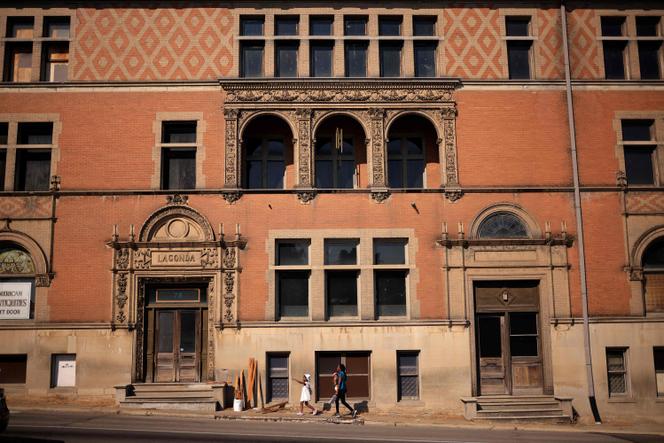


Not that anyone was actually holding their breath, but dog and cat lovers can rest assured: Haitians in Springfield aren't eating pets. The need to even write that sentence shows how much this small Ohio town was shaken, as if overtaken by a man-made tornado unleashed by Donald Trump. During the debate with Kamala Harris on September 10, the former president repeated this urban myth circulating on Facebook, thereby portraying Haitians as the viral embodiment of the migratory threat that he claims has been plaguing the US, with the complicity of the Democrats.
The consequences were immediate. Some 30 bomb threats were reported in the city, the origins of which are still unknown. The cultural festival scheduled for late September was canceled. Schools were closed and the university arranged to hold classes online.
At the small Haitian community center, operations manager Rose-Thamar Joseph counted 280 unanswered emails. Messages of support and solidarity were pouring in from all over the country. "The focus is on the Haitian community, but it's the entire Springfield community that's suffering from the situation," said this Amazon employee, in excellent French. "I was shocked, stunned, when I heard Trump. Coming from a figure of this stature, likely educated. These people have everything they need to verify information, but haven't tried to do so."
The center's executive director, Viles Dorsainvil, was overwhelmed. An employee of the town's welfare office, this thoughtful 38-year-old serves as a point of contact for officials. Along with other volunteers, Dorsainvil has been passing out messages to the community. Those with the means to do so have been encouraged to install alarms and cameras in their homes. And at night, to leave the lights on. Always go out in groups. Strange times.
"I love Springfield's diversity," said the director. "But there's a small group of supremacists who don't welcome integration. Last month, there were between five and 10 of them marching with weapons, wearing hoods. That was just to intimidate. We've also had negative comments, houses and cars vandalized. It's a very unfortunate situation, but we're holding our heads up high." In reality, the problem has gone beyond a handful of extremists. The city has turned it into a test case for America, a mirror of its anxieties and vehement polarization.
Located between Dayton and Columbus, surrounded by gas stations, warehouses and dull chain restaurants, Springfield has undergone an upheaval that can't be captured in snapshots. In the 1960s, the city had a population of 80,000. Industry was booming, and Springfield was growing like the mining-based northeast, America's industrial heartland. But from the 1980s onward, offshoring ravaged the local economy and the population plummeted, falling to 60,000. Then there was another upheaval.
You have 70.01% of this article left to read. The rest is for subscribers only.
